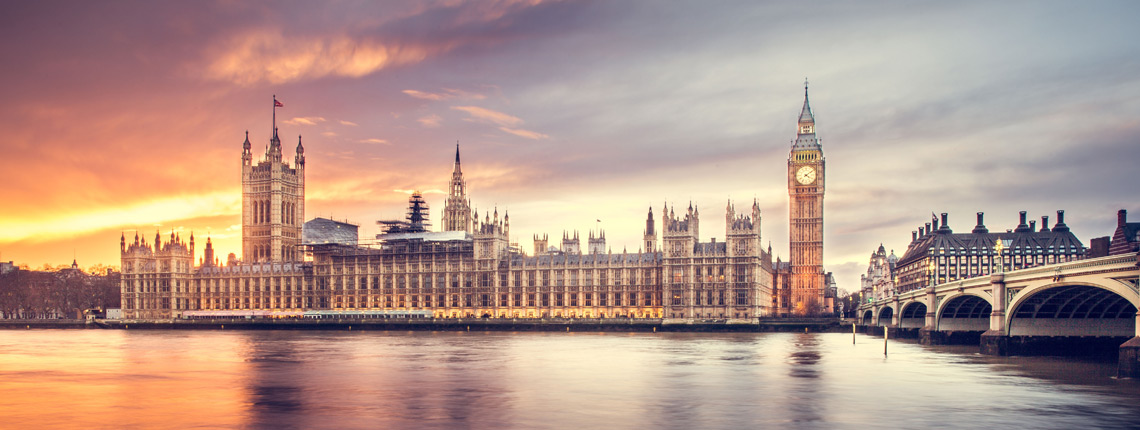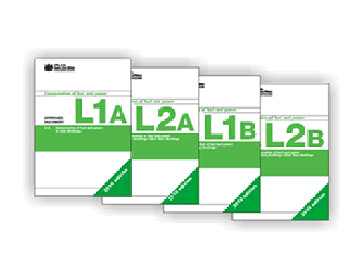

In this post the lighting design studio offer an explanation of Part L lighting, and sets out the requirements your lighting needs to meet. (Updated Feb 2022)
It’s a UK building regulation issued by the Secretary of State which lays down specific measures for the conservation of fuel and power. It is now a general aim to make our buildings as energy efficient as possible and therefore efficient electric lighting is required in most buildings. You will have to comply with this regulation when your building has been extended or when your existing lighting system is being replaced as part of re-wiring works.
The latest edition came out in Dec 2021 and will supersede the previous documents as of July 2022.

L1A New dwellings.
L1B Existing dwellings.
L2A New buildings other than dwellings.
L2B Existing buildings other than dwellings.
Both L1A and L1B documents refer to the Domestic building compliance guide which can be downloaded from the governments planning portal:
Documents L2A and L2B refer to the Non-domestic building compliance guide, again available on the governments planning portal:
https://www.gov.uk/government/publications/conservation-of-fuel-and-power-approved-document-l
Building regulations are legal requirements. You have a responsibility for ensuring compliance with building regulations and could be served with an enforcement notice, prosecuted and fined in cases of non-compliance.
In the previous Domestic building compliance guide, compliance was achieved with 75%, so 3 in every 4 of the fixed internal light fittings needed to have a minimum of 45 lamp lumens per watt. They also need to an output greater than 400 lamp lumens to count. This is now no longer the case and has been superseded with the below;
6.57 Any fixed lighting should achieve lighting levels appropriate to the activity in the space and spaces should not be over-illuminated.
NOTE: In many cases, it is likely that householders will be able to choose the lamp installed in the individual space.
6.58 Where installed in a new or existing dwelling, each internal light fitting should have lamps with a minimum luminous efficacy of 75 light source lumens per circuit-watt.
6.59 Where installed in a new or existing dwelling, internal light fittings should have local controls to allow for the separate control of lighting in each space or zone. Controls may be manual, automatic or a combination of both.
The change from 45 lamp lumens to 75 is a step in the right direction to ensure that energy efficient lighting is used through out.
Products that are not fixed like table and bedside lamps or products located in spaces that are not used often, like store cupboards and wardrobes can be excluded.
6.60 Where installed in a new or existing dwelling, fixed external lighting should have both of the following controls.
a. Automatic controls which switch luminaires off in response to daylight.
b. If luminous efficacy is 75 light source lumens or less, automatic controls which switch luminaires off after the area lit becomes unoccupied. If luminous efficacy is greater than 75 light source
lumens, manual control is acceptable.
In the non-domestic building compliance guide again you can skip to Section 6 (page 52) for the lighting part. Importantly, for this section the regulation makes a clear definition between luminaire lumens and lamp lumens. Light fittings, often referred to as Luminaires, are not 100% efficient and a proportion of light is absorbed or blocked by the reflector, diffuser, or lamp shade. Luminaire lumens is the amount of light (lumens) produced by a product after you take into account these losses (us lighting designers also call this the light output ratio or LOR). This is crucial because even light fittings that use very efficient lamps (light bulbs) or LEDS can still be inefficient, particularly those with thick diffusers.
In its simplest form in non domestic situations (new buildings other than dwellings L2A), for lighting to comply with Part L, the sum of all general light fittings need average 95 luminaire lumens per circuit watt. Again this is a step up from the previous 60 luminaire lumens.
6.60 Lighting should observe the following.
a. If it is general lighting, either:
i. have an average luminaire efficacy of 95 luminaire lumens per circuit-watt
ii. the Lighting Energy Numeric Indicator (LENI) method, following Appendix B.
b. If it is display lighting, any of the following:
i. have an average light source efficacy of 80 light source lumens per circuit-watt
ii. have a rated power usage no greater than 0.3W/m2 in each space
iii. the LENI method, following Appendix B.
c. For high excitation purity light sources, an average light source efficacy of 65 light source lumens
per circuit-watt
For display lighting the requirements step down slightly with the definition changing from luminaire lumens to lamp lumens where 80 lamp lumens per watt are the accepted levels.
Lighting controls are taken into account with recommendations taken from the guidance in the Building Research Establishment’s Digest 498.
There are certain buildings that have an exemption from compliance, listed buildings, monuments, places of worship, and temporary buildings for example. If you are not sure if your building needs to comply please contact the lighting design studio for guidance.
LENI (Lighting Energy Numeric Indicator) has also been included as an alternative to minimum luminaire lumens per circuit watt. So there are now two options to calculate energy use and show compliance.
LENI is a change of philosophy, looking at energy use rather than installed load. It measures predicted energy used by a lighting system over the length of a year (measured in kilowatt hours, per square metre, per year) so it looks at the complete system, rather than individual luminaires. At the lighting design studio generally we think this amendment is brilliant news. In the conventional method of calculation compliance, non domestic buildings areas that are not classed as office industrial or storage, use lamp lumen efficacy as the metric. So providing a product uses an efficient lamp, the light fitting would comply. With LENI manufacturers are being pushed to deliver more efficient luminaires – which is great. With LENI a control system can deliver up to 30 per cent reduction on the original luminaire efficacy (a control factor of 0.7) which is very important. It means we are no longer forced to use inappropriate light fittings because of their efficacy. We can look at using more appropriate but less efficient products in our designs, providing we control them properly. Calculating LENI is more complex as we need to know the total installed power, the area being lit and the number of hours that electric light is required during the year.
The role of checking that building regulations are being complied with falls to Building Control Bodies (BCBs). There are two types – the Local Authority Building Control (LABC) or a private sector Approved Inspector Building Control (AIBC). Customers are free to choose which type of Building Control Body they use on a project. In addition a competent person scheme has been introduced by the Government to allow individuals and enterprises to self-certify that their work complies with the Building Regulations as an alternative to submitting a building notice or using an approved inspector.
For dwellings (parts L1A & L1B) if you are carrying out any electrical work and / or adding fixed lighting to the outside of your house, in England and Wales you have to follow building regulations including Part L. You should either use an installer who is registered with the competent person scheme. Who should make sure your lighting complies with Part L and submit a SAP (Standard Assessment Procedure) or make an application to your local authority’s building control department or approved inspectors.
For Non dwellings (parts L2A & L2B) the methodology for proving compliance is the SBEM (Simplified Building Energy Model) and you will need to ensure that a Buildings Emission Rate for carbon dioxide (BER) is better than the Target Emission Rate (TER). If it fails there may be additional remedial work to ensure that the whole building complies.
As you can see from this post, Part L is complex and it can be quite hard to make sure a lighting scheme complies. At the lighting design studio we feel it’s understandable that regulations are getting tougher. We live in times where the impact of global warming and rising electricity costs is a real issue. If government regulation helps push people into using existing much more efficient technology it’s a good thing, as with most new technologies, people can be slow to adapt, most people don’t like change. If you have any questions or need help ensuring your project complies with Part L, then please do get in touch.